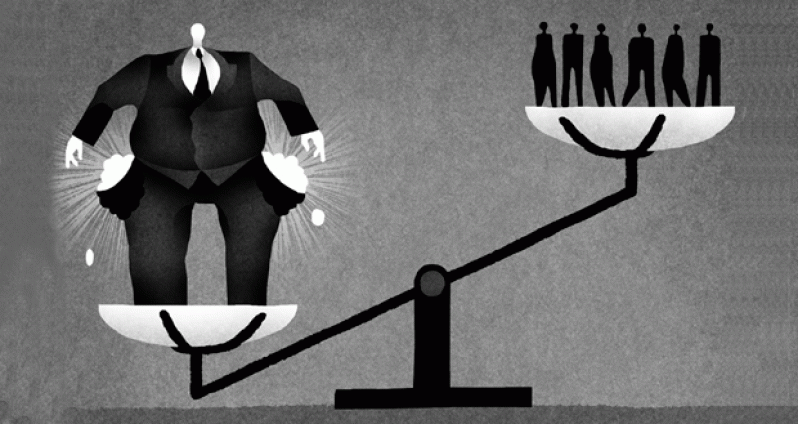INEQUALITY produces inhumane results for the entire world. And when you think of the relationship between distribution of income and development in any developed or developing country, you see the urgency of reducing inequality among the poor and vulnerable people, victims of these vicious outcomes.(QUOTE)‘At the endpoint, regardless of whether a country is rich or poor, inequality through an unfair distribution of income breeds poverty; and the remedy is a war on inequality.’
And you may think that countries with huge resources would have the least inequality. But think again! The U.S. with huge capital wealth remains a country with a phenomenally growing inequality. In fact, in G7 countries (key industrial democracies), inequalities between the rich and poor are ever worsening, and do put a damper on their upward mobility (see Table 1 below for the G7 Gini Index). What is the Gini Index?
The Gini Index measures the degree to which inequality in income or consumption expenditure among individuals or households in a country differs from perfect equality; for instance, when a country’s Gini Index score is 0, then everyone will have a similar income, a situation of perfect equality, and when it is 1, then a few persons have all the income and the others have little or no income, a situation of perfect inequality (http://data.worldbank.org/indicator/SI.POV.GINI). However, the Gini Index is not without its criticisms.
Table 1: G7 Countries & their Gini Index scores, including the World

Source: https://www.cia.gov/library/publications/the-world-factbook/fields/print_2172.html
Table 1 shows increasing inequality between the rich and the poor in these respective G7 countries, except for Germany and France. The world as a whole also is tending toward inequality. Is this trend of inequality for G7 countries similar to that of poor countries, such as, lower middle income countries? Table 2 shows the Gini Index for nine (9) lower middle income countries (poor nations).
Table 2: Lower Middle Income Countries & their Gini Index Scores

Source: https://www.cia.gov/library/publications/the-world-factbook/fields/print_2172.html
In Table 1, for G7 countries, the average Gini Index was 35.1 at their last score, and their average was 31.6 at their previous score. In Table 2, for these lower middle income countries, the average Gini Index was 44.1 at their last score, and their average was 44.9 at their previous score. The World Bank classifies lower middle income countries as having a gross national income (GNI) per capita of US$1,036 to US$4,085 (http://data.worldbank.org/about/country-classifications).
Undoubtedly, G7 countries as key industrial democracies generally would have greater GNI per capita than lower middle income countries; and so there is an expectation that countries with greater resources may have greater leverage to reduce inequality in their societies. But G7 countries seem to have a trend toward increasing inequality as the averages in Table 1 suggest, notwithstanding their hold on huge resources. And on the contrary, the poor nations in Table 2 show some feeble signs of trying to break out of this inequality bubble, even with limited resources.
In an exploratory sense, then, a very tentative conclusion could be that reducing inequality through an equitable distribution of income has little to do with whether a country is rich (developed) or poor (underdeveloped or even developing), contrary to the traditional thinking on development.
Ahluwalia (1976) in accepting the traditional thinking on development concluded that for poor as well as rich nations, inequality increases at the earliest stage of development, and decreases as development advances. If this is the case, how would Ahluwalia today interpret the rising inequality in the U.S. and other G7 countries, all developed nations? For in Ahluwalia’s conclusion, advanced development brings forth reduced inequality which is certainly not the case for the G7 countries.
At the endpoint, regardless of whether a country is rich or poor, inequality through an unfair distribution of income breeds poverty; and the remedy is a war on inequality.
By Dr. Prem Misir



.jpg)








